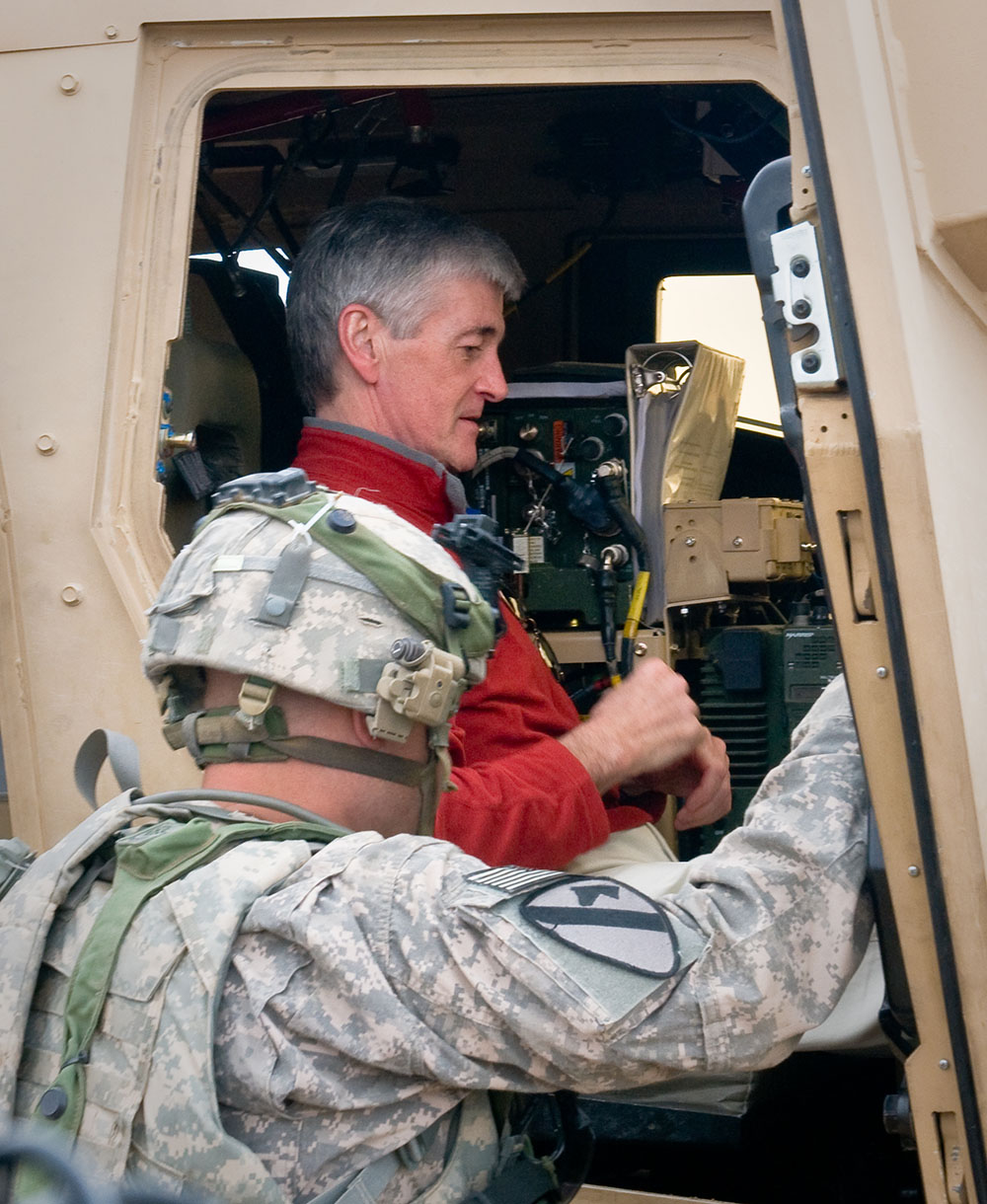
By Kristen McCullough, PEO STRI Public Affairs Officer
As the Army stares down looming budget cuts amidst the need for a critical technology refresh, the Network Integration Evaluation (NIE) exercises set the scene for a more efficient acquisition process, senior defense officials said.
“We have economic challenges in this nation, and the military budget reflects those as well, but it’s critical that we continue to modernize and give our Soldiers the best possible equipment,” Secretary of the Army John McHugh said during a visit to White Sands Missile Range in May 2012. “The NIE is a critical component to make sure that we can, in an affordable way, continue to modernize and give our Soldiers the best available equipment. ”Launched in June 2011, the NIEs are semi-annual evaluations designed to quickly integrate and mature the Army’s tactical communications network, the service’s top modernization priority. The NIE exercises promote Soldier feedback of the technology under test, and the rapid fielding of network equipment to meet their needs.
The NIEs are part of the Agile Process, the Army’s new quick -reaction acquisition methodology to address defined capability gaps and insert new technologies into the overall network at a lower cost. By putting equipment in Soldiers’ hands in a realistic operational environment every six months, the Army and industry can make necessary changes and arrive at a solution that can be integrated and procured in months rather than in years, Lt. Gen. Bill Phillips, principal military deputy to the Assistant Secretary of the Army for Acquisition, Logistics and Technology, said.
“That’s changing the paradigm, and changing the thinking about how acquisition works,” he said.
PEO STRI’s Project Manager for Instrumentation, Targets and Threat Simulators (PM ITTS) has been an active participant in the evaluations providing a realistic threat environment for the system sunder test.
The Integrated Threat Force provides a suite of tools representative of a realistic and relevant threat, said PM ITTS’ top official Col. Sharlene Donovan. “This environment can be configured to represent any threat force, which is important as the Army conducts operations against an adaptive and information-savvy enemy. Tools of this sort will undoubtedly find their way into the inventory for collective training. ”In addition to providing the enablers to model the threat environment, the One Semi-Automated Forces (OneSAF) program has also helped to facilitate the NIEs.
“OneSAF provides the wrap -around forces, simulating and stimulating things that can’t physically be there,” Oanh Tran, PEO STRI’s assistant project manager for the NIE, said.

Photo Credit: Sgt. Edward A. Garibay, 16th Mobile Public Affairs Detachment
Secretary of the Army John McHugh sits in an up-armored vehicle, while listening to a 2nd Heavy Brigade Combat Team, 1st Armored Division, Soldier explain new equipment being tested during Network Integration Evaluation 12.2 at Fort Bliss, Texas, May 9, 2012. McHugh toured the NIE, a Soldier-led evaluation process that tests network and non-network equipment in a robust operational environment.
While PM ITTS’ Integrated Threat Force and PM ConSim’s OneSAF helped to enable past NIE events—a swill they continue to do so in the future, PEO STRI plans to capitalize on the opportunity to have training systems evaluated in future exercises, Tran said.
The Project Manager for Training Devices (PMTRADE) will be added to the mix come fall. During the NIE exercise slated for October 2013, Soldiers will be able to evaluate the effectiveness of a compartmentalized version of IMILES-IWS, or Instrumentable Multiple Integrated Laser Engagement Systems-Individual Weapon System.
Tran noted the importance of these evaluations is getting the assessment from the end-users. “How is [the system] working for you as a Soldier?” she asked. “What can we do to make [the product] better? ”There is a good possibility that PM ConSim’s Intelligence Low Overhead Driver, a product of the Intelligence Electronic Warfare Tactical Proficiency Trainer, will be evaluated during the upcoming NIE in the spring of 2013.
“So far, the NIEs have focused mainly on networked [communications], but we are seeing the trend for it to migrate into the training world,” Tran said.
Synchronized fielding of capability set sight amount and type of gear for the brigades that need it first, and then incrementally modernize it, instead of spending resources on technology that may be out of date by the time it is needed.
McHugh described the NIE as “one of the most important things strategically that this Army has taken up in recent years” in delivering enhanced capability and laying the groundwork for broad acquisition improvements.
“These are tough economic times, and we owe it to the taxpayers, as well as to the Soldiers, to make sure we’re working in ways that get them those most advanced platforms, and in this case communications equipment, as quickly and as affordably as possible,” he said.
Some of the information included in this article was previously published May 14, 2012 in the article, “Leaders Say Network Integration Evaluation Improving Army Acquisition,” by Claire Schwerin, U.S. Army Assistant Secretary of the Army for Acquisition, Logistics and Technology (ASA(ALT)) System of Systems Integration Directorate.
In celebration of the 25th anniversary of the Army Acquisition Corps (AAC), Access is publishing articles that highlight milestones throughout the history of the AAC. Each article marks a moment in acquisition excellence.
This article was published in Inside PEO STRI, September 2012.







